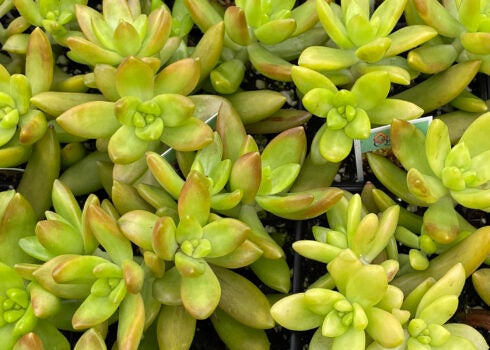Resilient sedums offer beauty and versatility
Published 9:58 am Monday, March 4, 2024
By Eddie Smith
MSU Extension Service
In the realm of gardening, few plants offer the versatility, resilience and sheer beauty of sedums. It’s no wonder why I’ve seen the popularity of these remarkable succulents grow.
These remarkable plants, also known as stonecrops, have captivated the hearts of gardeners and plant enthusiasts around the world for centuries. If you are not familiar with these beauties, I hope you will be intrigued enough to try them yourself.
Sedums belong to the Crassulaceae family that encompasses a vast array of species, cultivars and hybrids. From clumping ground-huggers to cascading wonders, sedums come in a multitude of shapes, sizes and colors to cater to gardeners’ tastes and preferences.
One of the most striking features of sedums is their ability to store water in their leaves, allowing them to survive in arid conditions with minimal moisture. This adaptive trait not only makes them ideal choices for xeriscaping projects but also ensures their resilience in other less forgiving environments.
One of the first sedums to catch my eye is the Aurora sedum.
Its thick, fleshy leaves arranged in a perfect rosette pattern create a mesmerizing sight. The leaves have a soft green hue with a hint of pink. Their powdery coating gives them a matte finish that evokes a sense of tranquility.
But in full sun, these leaves truly come alive. They are adorned with a bright pink edge that adds a delightful pop of color to the garden space.
The Aurora sedum can grow up to 6 inches tall and 12 inches wide. During the summer, clusters of star-shaped yellow flowers add to the beauty of this plant.
Another unique sedum is Burro’s Tail. Named for its long, trailing stems that resemble the tail of a burro or donkey, this plant exudes elegance.
The stems of Burro’s Tail reach up to 3 feet long and are adorned with small, plump, light-green leaves. These leaves serve as water reservoirs, enabling the plant to withstand dry spells with ease. I appreciate its low-maintenance nature, thriving with just indirect light and well-draining soil.
During late summer, this sedum produces small pink or red flowers on the ends of the stems. This characteristic makes it a great plant to use in hanging baskets.
Some people believe that Burro’s Tail sedum has healing properties, and they use it in traditional medicine.
Another favorite is the Orange Delight sedum, a beacon of vibrancy in the garden. As its name says, it is a true delight to behold. Its resilience, drought tolerance and versatility make it a popular choice for rock gardens, container gardens and ground cover.
The leaves of the Orange Delight start as a bright green hue, then gradually take on an orangish or bronze tint as the plant matures, adding warmth and charm. During the summer, it produces clusters of tiny, star-shaped white flowers that attract pollinators like bees and butterflies.
These plants combine visual allure with a remarkable ability to thrive in harsh conditions. Whether you choose for your plants to cascade from a hanging basket, carpet a rocky slope or adorn a sunny border, sedums will impress you with their charm.




